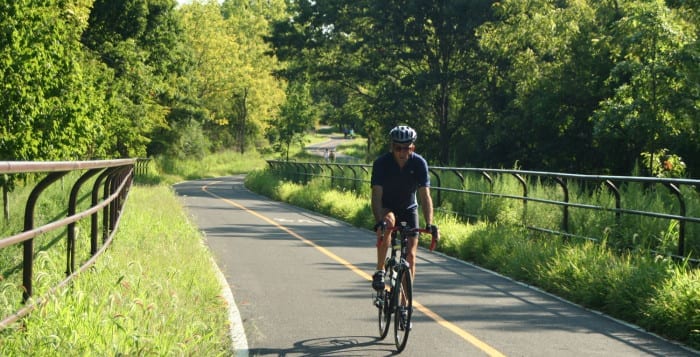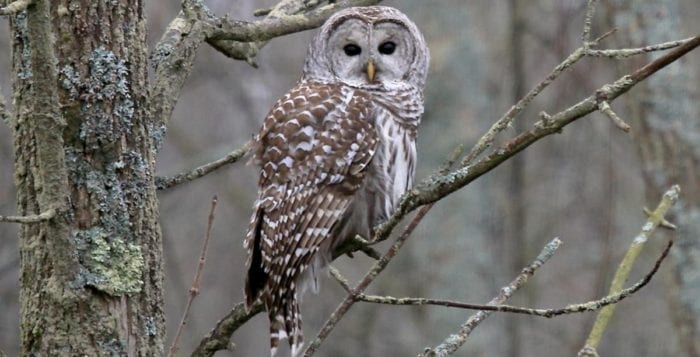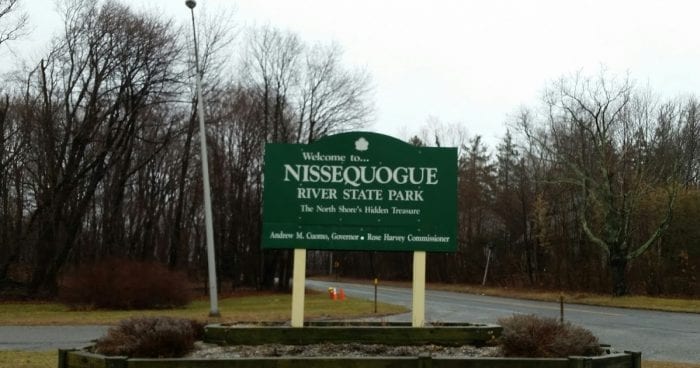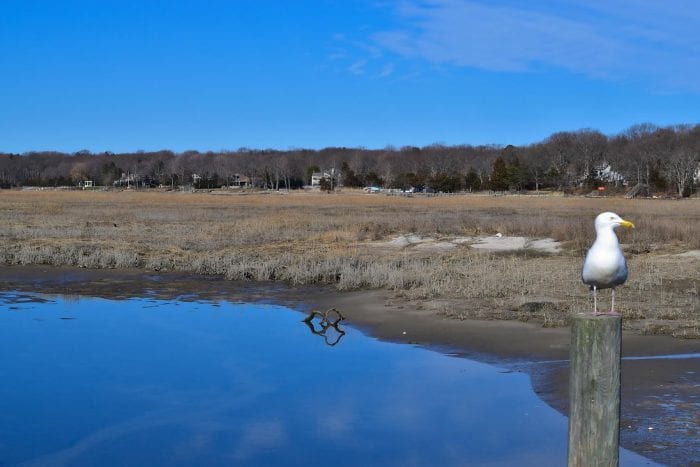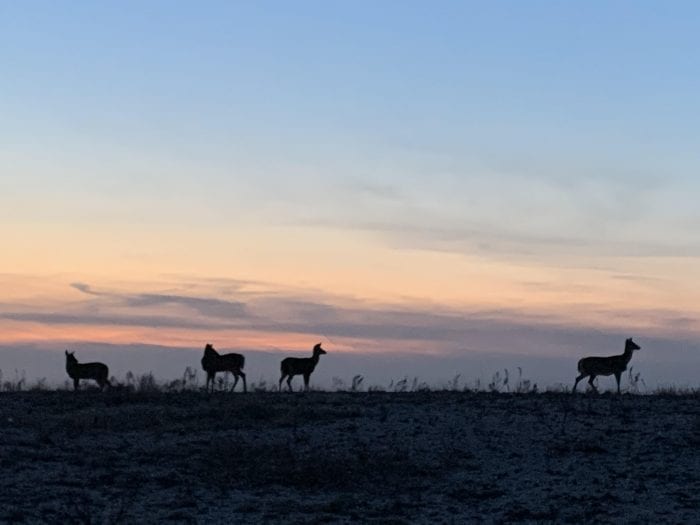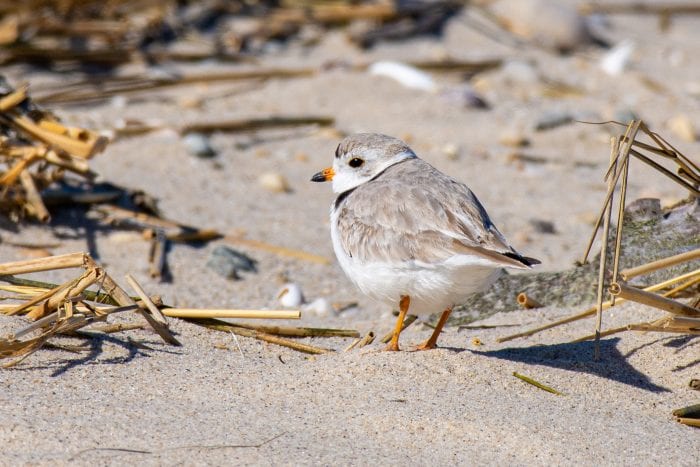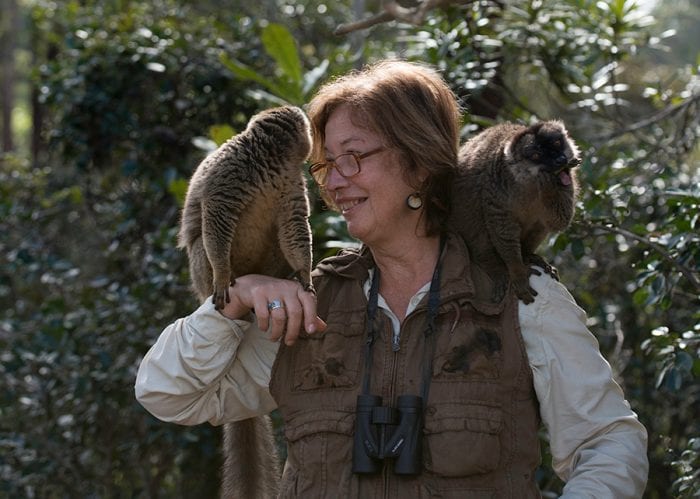The Three Village Community Trust will host a cleanup of the Setauket and Port Jefferson Station Greenway Trail on Saturday, April 17 at 9 a.m. Meet up with Friends of the Greenway volunteers at trailheads at Limroy Lane in Setauket or Hallock Ave. and Main St. in Port Jefferson Station. For more information, please email [email protected].
Nature Matters: Haiku
By John L. Turner
A great joy from spending time outdoors emersed in nature is the opportunity, afterwards, to share the experience with others. Directly recounting a memorable nature experience with a friend or family member, say, of an osprey successfully plunging from fifty feet high, with talons flaring, to hit the water and seize a fish, or a more gentle scene of watching a pair of monarchs dancing around a buttery yellow blossoms of seaside goldenrod is, of course, the most common way to share. A more lasting way is through painting a favorite landscape, thereby providing a permanent record of beauty, wonder, and illumination. And then, there’s the very popular alternative of sharing taken photographs.
Another way to share a memory is with the pen or keyboard and that’s where my favorite way to memorialize a nature experience comes into play: writing a haiku about it. A haiku is a short poem typically structured to have three lines with the first and last lines containing five syllables and the middle containing seven, for a total of seventeen syllables. Haiku developed in Japan as far back as the ninth century but really took hold several centuries ago as a way to remember and celebrate nature.
What I’ve always enjoyed about writing haikus is that it requires your mind to distill the experienced moment into its essence, jettisoning extraneous material. This is, I find, not so easy to do. After all, you have but seventeen words to tell a story. Oh, the value of discipline!
Any subject in nature can be the focus of a haiku.
I find birds to be an especially appealing subject:
Hidden in white pine,
An owl hoots from the darkness,
With North Star above.
Barn and tree swallows,
flit, dash, and turn in sunlight,
flashing metal tints.
Overhanging branch,
Reflects bird in still water,
Belted Kingfisher
A woodcock spirals,
Toward the belt of Orion,
With love on his mind.
Bluebirds in rapture,
Tumble from a perch of oak,
The sky is falling.
With sun as loci,
Red-tailed hawk pair pirouettes,
Fanning brick toned tails.
From a city tree,
House finch song sweetly echoes,
Off brownstone buildings.
Miniature forms,
These metallic hummingbirds,
Are other worldly.
Woodpecker on tree,
Hammering of bill wears wood,
Like water does stone.
Red knots on mud flat,
hemispheric globetrotters,
bind us together.
Noisy blackbird flock,
Descends to ground from treetops,
Tossing leaves to feed.
Next to birds I’ve probably written more haikus involving the ocean than any other topic:
Miles from Island’s end,
Leviathan surfaces,
Birds flock and fish leap.
A lone sanderling,
Searches for food in wave foam,
Along the sea’s edge.
A fishing boat plows,
Through strong wind and crested waves,
Wearing cap of gulls.
A grey green ocean,
With waves made angry by wind,
Hurls against the shore.
Devonian forms,
Pairs of horseshoe crabs spawning,
Bathed in bright moonlight.
Mysterious sea,
With implacable surface,
Teems with life beneath.
Plants can be great haiku subjects too:
Spring dogwood petals,
Floating in woodland gloaming,
Like lotus on pond
A gift from a tree,
A yellow and red leaf falls,
Autumn has arrived.
Splitting sidewalk crack,
bursts of chicory purple,
the power of plants.
The smooth bark of beech,
Ripples like animal skin,
An elephant tree.
A fragile flower,
Unfurls like spreading fingers,
Of an upturned hand.
Under crisp blue sky,
Orange pumpkins dot brown earth,
A field with freckles.
On white pine sapling,
The weight of a wet spring snow,
makes the tree curtsy.
A goldenrod field,
Filled with bright yellow flowers,
Sunshine concentrate.
How about insects?
Monarch butterfly,
With Mexico on its mind,
Flutters over road.
In warming spring sun,
A mourning cloak butterfly flits,
Over forest leaves.
And then there’s miscellany:
Strand of orange sky,
The sun has fallen again,
The earth spins through space.
An orange sliver,
The western sky glows brightly,
Soon stars will appear.
Grasses look like hair,
On hills that look like muscles,
This animal earth.
Snowflakes rock downward,
On to a whitening earth,
Hiding all things.
A snowy blanket,
Covers everything in sight,
It is quiet and hushed.
Why not give haikus a try?
A resident of Setauket, John Turner is conservation chair of the Four Harbors Audubon Society, author of “Exploring the Other Island: A Seasonal Nature Guide to Long Island” and president of Alula Birding & Natural History Tours.
Recreational health advisory for Nissequogue River issued
The Suffolk County Department of Health Services today issued an advisory to take precautions before recreating in the Nissequogue River and boat ramp parking area at/near the Nissequogue River State Park Marina in Kings Park. This advisory follows a recent NY-Alert notification of an effluent discharge from a manhole within the conveyance network in this area. Though the effluent has been treated, there is potential for elevated levels of pathogenic organisms to be present in this area.
Corrective actions to mitigate the discharge have been initiated and full repairs are scheduled for Friday, April 16, 2021.
Suffolk County Health officials are working closely with the NYSDEC, which has jurisdiction over the permitting, enforcement, and management of the Kings Park sewage treatment plant.
Residents and fisherman are advised to avoid contact with waters from this area of Nissequgoue River as well as the boat ramp parking lot until full repairs of the conveyance network are made. NYSDEC already prohibits the harvest of shellfish from this area at all times. Keep children and pets away from the area as well. If contact does occur, rinse off with clean water immediately. Seek medical attention if after exposure you experience nausea, vomiting or diarrhea; skin, eye or throat irritation, or allergic reactions or breathing difficulties.
More information is forthcoming as health officials learn more about the situation.
What is happening to Long Island’s wetlands?
By Angela Palumbo
In January 2020, former President Donald Trump (R) signed an executive order that replaced the U.S. Environmental Protection Agency’s and the U.S. Army Corps of Engineers definition of what is considered a federal body of water under the Waters of the United States rule, known as WOTUS.
In his election campaign, President Joe Biden (D) promised to undo these changes, which are currently under review.
But what does all of this mean for Long Island?
Wetlands are areas where water covers the soil, or is present near the surface of the soil all year for varying periods of time. According to a U.S. Fish and Wildlife Service report, as at 2004 6% of Long Island was made up of wetlands — that’s about 51,000 acres.
Wetlands, due to their beneficial services to people and wildlife — including providing habitats to multiple species, improving water quality and assisting with flood protections —are among some of the most productive ecosystems in the world.
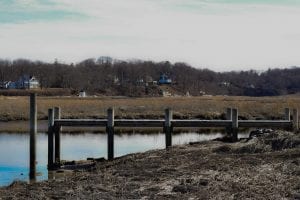
Wetland protections can also create problems for business developers and farmers. One of Trump’s main reasons for passing his executive order in 2020 was to redefine the definitions of which bodies of water could be protected under WOTUS in order to remove legal roadblocks to farmers caused by the need to determine whether water on their land fell under control of the federal government.
“After decades of landowners relying on expensive attorneys to determine what water on their land may or may not fall under federal regulations, our new Navigable Waters Protection Rule strikes the proper balance between Washington and the states in managing land and water resources while protecting our nation’s navigable waters, and it does so within the authority Congress provided,” said EPA administrator, Andrew Wheeler, in a January 2020 news release.
Now, due to the undoing of restrictions by Trump’s administration, local conservationists are worried about the long-term effects on Long Island’s wetlands.
Coby Klein, a conservationist at the Huntington-Oyster Bay Audubon Society and adjunct professor of Natural Sciences at Baruch College, said that Long Island’s wetlands are beneficial to both the community and the organisms that dwell in them, and they need to be preserved.
“Wetlands provide protection from flooding, especially the coastal wetlands, the salt marshes and things like that,” he said. “They also help work to mitigate climate change. When plants die in these wetland areas, they don’t decompose very quickly. They serve as what’s called a carbon sink. Instead of carbon being put back into the atmosphere when a plant dies, it gets stored in the soil and in the muck in the water.”
Victoria O’Neill, Long Island Sound Study habitat restoration coordinator at the state Department of Environmental Conservation, is another local conservationist who confirms that healthy wetlands are important to Long Island.
“Tidal wetlands provide many different ecosystem services to Long Island communities,” she said. “They help provide protection from coastal storm surge, improve water quality, provide recreational enjoyment and serve as nesting, breeding and resting grounds for commercial and recreationally important fish and shellfish.”
With all of the benefits wetlands provide to Long Island communities and ecosystems, why did the federal government want to push back on protecting them? Klein said it is because, “they get in the way.”
“When there’s any type of pollution that gets into a body of water, it ends up in a wetland,” Klein said. “That’s bad news for the things that grow there and live there. Salt marshes are very susceptible to nitrogen pollution, and that’s a big problem on Long Island because almost everybody around here fertilizes their lawns, and they tend to overfertilize.”
He added that because of the high volume of sewage systems on Long Island, the excess fertilizer from people’s lawns and farmers’ fields tends to go from the sewage systems to large bodies of water and then eventually into rivers and wetlands. This causes excess nitrogen that is detrimental to those ecosystems.

Under Trump’s redefinition of protected waters under WOTUS, it has become easier for developers and farmers to make those kinds of damages to wetlands but, according to the DEC, New York is taking great steps forward as a leader in the efforts to protect state wetlands and their invaluable natural habitat.
“It is estimated that the Navigable Waters Protection Rule will remove federal protections for about half the nation’s wetlands,” the state DEC said in a 2020 statement. “Thankfully, existing strong protections of waters in New York state will reduce the impact of the Navigable Waters Protection Rule compared to many other states. However, not all wetlands are protected under New York law and we rely on federal protection and our water quality certification review to protect smaller wetlands. Recent changes in the definition of Waters of the United States have resulted in fewer of these smaller wetlands receiving any regulatory protection.”
According to O’Neill, active steps are being taken to restore wetland habitats that have been lost.
“The tidal wetland ecosystem target in the LISS’s 2015 Comprehensive Conservation & Management Plan set a goal to restore 515 additional acres of tidal wetlands by 2035 from a 2014 baseline,” she said. “As of 2020, we are 15.5% toward our goal.”
Klein said that restoration projects are time sensitive and need to happen as soon as possible.
“Wetlands provide us with all kinds of important ecosystem services and even more important than that, they’re just pleasant places,” he said. “We should try to preserve them simply because there are so many creatures besides us that depend on them. So even if they didn’t do all this important stuff for us, we should still try to conserve them because they do important things for other species.”
To see more photos, visit tbrnewsmedia.com.
Photo of Week
ROADSIDE POP
Dawn Olenick captured this incredible sunset in her hometown of of Baiting Hollow on March 27. She writes, ‘[Just] Mother Nature doing her thang!’
Send your Photo of the Week to [email protected]
Photo of the Week
A STATUESQUE SIGHT
Michael Perlotto of Stony Brook snapped this incredible photo in mid-March. He writes, ‘I was walking at dusk on Trustees Road [at West Meadow Beach]. I rounded the corner and came upon this amazing scene. I was the only one within eyesight … you could hear a pin drop as the deer stood off on the horizon. I quickly took this picture with my iPhone as the deer stood perfectly still like statues!’
Send your Photo of the Week to [email protected]
Local park ready to install cutting edge wastewater system
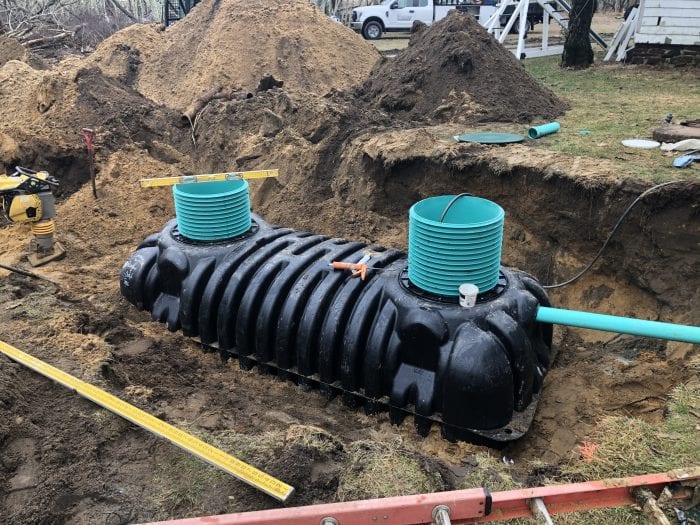
Frank Melville Memorial Park is about to add a cutting-edge process to help protect local waters.
In a recent press release, trustees of the Frank Melville Memorial Park Foundation announced that the Long Island Sound Futures Fund awarded the park a grant to install a wastewater biofilter at the Setauket park. The award administered through the National Fish and Wildlife Foundation totals nearly $30,000.
The biofilter will replace a cesspool at a residence on the park’s property.
“We are extremely grateful to the Long Island Sound Futures Fund and the National Fish and Wildlife Foundation,” park trustee Robert Reuter said in the press release. “Not only will the project reduce wastewater pollution to the Setauket Mill Pond but it will offer a tremendous educational example for the Setauket community and beyond about residential wastewater problems on Long Island and what can be done about it.”
In the press release, park trustees also thanked Suffolk County Legislator Kara Hahn (D-Setauket) and state Assemblyman Steve Englebright (D-Setauket) for their support “in helping the project obtain the grant award.”
The wastewater treatment technology used at the park will be a nitrogen-removing biofilter that was recommended by researchers at the New York State Center for Clean Water Technology at Stony Brook University, according to the press release.
Members of the center unveiled their nitrogen-reducing biofilter at a Shirley home in 2018. The wastewater biofilters remove nitrogen and other harmful contaminants from residential waste which is first pumped into a septic tank. The effluent is then moved into a separate system that trickles down by gravity, first going through a sand layer where bacteria turns the nitrogen into nitrite and nitrate. The waste then goes through another layer of sand and wood chips designed to turn the nitrite/nitrate into nitrogen gas that will go into the atmosphere, instead of the ground or surrounding water.
In 2015 Suffolk County Executive Steve Bellone (D) called nitrogen pollution the county’s “environmental public enemy number one.” Since then, the county has worked with local scientists and engineers to craft technology that could replace Long Island’s old cesspool and septic tanks.
The plans for the park system were designed by Tom O’Dwyer, from HomePort Engineering, and the installation will be awarded to an installer by a competitive bid.
O’Dwyer and his wife, Carolyn, installed a low-nitrogen septic system on their Strong’s Neck property in the spring of 2019 after learning about the treatment process. Unlike a cesspool where bacteria and nitrogen can seep out, O’Dwyer said in a 2019 interview that the advanced process removes more nitrogen than a cesspool. Excessive nitrogen can affect the oxygen level in water where it is below the necessary levels to support marine life.
O’Dwyer recently said in an email he has been pleased with the results of his system, and in the last two years, he has designed a handful of the wastewater systems in environmentally- sensitive areas in the Three Village community.
“It’s an exciting project, and I am proud to be part of it,” he said.
Town of Brookhaven offers free mulch and compost
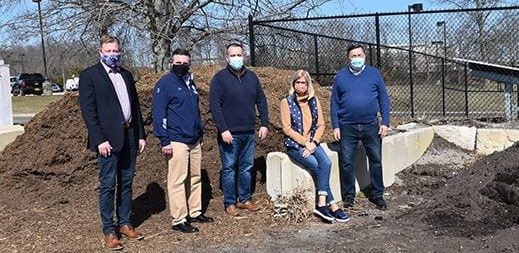
Supervisor Ed Romaine has announced that the free mulch and compost is available at seven, conveniently located Town facilities. The free mulch and compost are part of the Supervisor’s “Greening Brookhaven” initiative. Mulch and compost are available in bulk, so residents must bring shovels and containers to load it into their vehicles. All will be distributed on a first come, first served basis while supplies last.
Residents of Brookhaven Town may pick up free mulch and compost at the following Town facilities:
• Brookhaven Town Hall, South Parking Lot, One Independence Hill in Farmingville (residents only)
Monday – Friday from 9:00 am to 7:30 pm and Saturday-Sunday 8:00 am to 8:00 pm
• Percy Raynor Park, Route 347 and Belle Mead Road in South Setauket (residents only)
Monday – Friday from 7:00 am to 9:00 pm and Saturday and Sunday from 8:00 am to 8:00 pm
• Rose Caracappa Center, 739 Route 25A in Mt. Sinai (residents only)
Monday – Friday from 7:00 am to 9:00 pm and Saturday and Sunday from 8:00 am to 8:00 pm
• Brookhaven Landfill, 350 Horseblock Road in Brookhaven Hamlet (residents and commercial)
Monday – Friday from 7:00 am to 2:45 pm and Saturday from 7:00 am to 12:00 noon.
• Manorville Compost Facility, Papermill Road in Manorville (residents only)
Monday – Friday from 7:00 am to 3:00 pm (Closed for lunch 11:50 am – 12:30 pm)
• Holtsville Ecology Site, 249 Buckley Road in Holtsville (residents only)
Monday – Friday from 9:00 am to 3:00 pm
• Robert E. Reid, Sr. Recreation Center, Rte. 25A and Defense Hill Road in Shoreham (residents only)
Monday – Friday from 7:00 am to 9:00 pm and Saturday and Sunday 8:00 am to 8:00 pm
Commercial vehicles are permitted only at the Brookhaven Landfill, where a fee of $12 per yard will be charged.
For more information, call 631-451-TOWN or visit the Town website.
Photo of the Week
CHARADRIUS MELODUS SIGHTING
Tom Caruso of Smithtown went to Short Beach in Nissequogue on March 13 and came upon his favorite shorebird. He writes, ‘I was walking along the beach when I caught something moving from the corner of my eye. After a few seconds I realized that it was this piping plover moving through the reeds that washed up on the shore. I followed it for a while and was able to snap several pictures of it.
Send your Photo of the Week to [email protected]
SBU’s Wright looks to virtual tours and fundraising to fill ecotourism gap in Madagascar
Stony Brook University Distinguished Professor Patricia Wright wants you to visit Madagascar, virtually for now and in person in the future. Wright, an award-winning scientist who has spent over 30 years studying the lemurs of the island nation of Madagascar, has been encouraging virtual ecotourism to the island nation, which has been struggling economically amid a pandemic that halted tourism. Wright recently raised money to support continuing operations for Centre ValBio, a research station she built in a national park she helped create. She has also helped secure money to create the nation’s first canopy walkway. The award-winning professor discussed COVID-19, conservation and science in Madagascar.
TBR: How has Covid affected Madagascar?
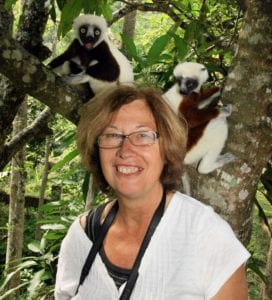 Wright: I flew back in January just after New Year’s. The Madagascar I saw was a lot different from New York. They have been able to stave off Covid by not allowing people into the country. It’s an island nation. There’s only one international airport. It was in some ways, a little bit better than in New York because there was less Covid. However, economically, it was a disaster because much of the gross national product for Madagascar is tourism and there has been absolutely no tourists there, and no researchers, either.
Wright: I flew back in January just after New Year’s. The Madagascar I saw was a lot different from New York. They have been able to stave off Covid by not allowing people into the country. It’s an island nation. There’s only one international airport. It was in some ways, a little bit better than in New York because there was less Covid. However, economically, it was a disaster because much of the gross national product for Madagascar is tourism and there has been absolutely no tourists there, and no researchers, either.
TBR: Has the government provided some support to bridge the gap?
Wright: It’s a real problem, because it’s the third poorest country in the world. The government doesn’t have a lot of funding. We’ve been asking for funding from the United Nations, from the World Health Organization, from the international agencies and they’ve been able to give some stop gap funding.
TBR: Does this crisis become worse with each passing week?
Wright: This is what I worry about because families were telling me when I was in Madagascar that they don’t have money to buy the seeds to plant their crops. That means that it’s not only right now that they don’t have enough money, but if they don’t plant the rice, they’re not going to have enough rice to eat. It’s reaching a crisis. Stony Brook has really pitched in … We have virtual wildlife tours, where people can go to Madagascar and our tourist guides will take you to Ranomafana. That’s adding income. People are taking their families to Madagascar by just doing zoom.
TBR: Does it look like tourists will return to Madagascar soon?
Wright: We’re hoping that that will occur in June or July of this year. That’s what the hope is, that this will start. The international airport right now is closed. That’s a good thing because that means that there’s not as much Covid coming in … When enough people get vaccinated, you’ll probably have to show your vaccination card if you want to get on a plane.
TBR: Are people booking trips?
Wright: I have a ticket to go at the end of May. Air France and Ethiopian Airlines are booking tickets for May, June and July. There’s hope.
TBR: You mentioned the virtual tours that people are taking. How many people are taking those tours?
Wright: A couple of hundred a week, and particularly because we’re also tapping into schools. A teacher can bring a class to Madagascar … Families can have a family reunion going to Madagascar all together. It’s interactive.
TBR: Are people seeing the same things they would see if they were on site?
Wright: They have some really great footage. They can get much closer to lemurs than if you were underneath them looking up in real life.
TBR: Do you hope people will follow up with an in person visit?
Wright: I’m hoping we’ll get a big increase in tourism once everything opens up
TBR: What about conservation?
Wright: It’s really difficult because people think that because the nation is shut down from the outside world, they can just go in and hunt. They can go back into protected areas because there’s not tourists there. There’s a real threat. We’ve been able to continue our programs in education and health and reforestation.
TBR: Are you concerned that some of these species might become extinct?
Wright: I really worry about that. There are some species of lemurs where there’s only 50 left. … We have 113 species of lemurs. They are in every part of Madagascar. It’s hard to protect them all, each one is so individually different. Lemurs have been evolving for 55 million, 60 million years. They’re only found on Madagascar. If we lose them, we really lose a part of our primate history that is very precious.
TBR: Is there any thought about capturing them and protecting them in an enclosed space?
Wright: We have thought about that. There has to be a long term program, though. If you bring that many animals into captivity, you have to be sure you have the funding to keep them fed and well protected. We have been thinking about that. We’ve been doing some translocations, where we take them from a place where they’re really threatened and they’re eating crops and farmers don’t like that. We take them out of that very dangerous situation and bring them into a protected area.
TBR: Are there funders that recognize this is a time where they can do the most good?
Wright: We do have some foundations that are stepping up, but we need more to step up … I just received a grant from the Leakey Foundation, which is out of San Francisco, and they just gave us money to keep the lights on for another three months. We are working hard to keep going.
TBR: How can people help?
Wright: I’ve already mentioned virtual tours [which cost about] $30 a person. For donating, we have a donation button at Centre ValBio. This is through Stony Brook and Stony Brook is very good about making sure the money goes straight to Centre ValBio, which is the name of the research station.
TBR: What about the science side?
Wright: I just got off a Zoom call with the sifaka guys … With the Covid year, we have a beautiful database, now we’re able to mine that, which consists of the plants and animals that are in Ranomafana. We’re making a relational database [that has over] 35 years of data that we’ve been taking from all over the region. It’s one of the few long term databases that there are in the tropics and we’re very proud of that.
TBR: Will the public be able to access some of that data?
Wright: Yes, we’re not at that point yet, but that what’s what we’re hoping for … We just heard news that we’re going to have a canopy walkway, which we have been wanting to put into Ranomafana National Park for over a decade and the funding has just been found. And so, we are going over to Ranomafana in May/ June with a designer to put in that canopy, so we’ll be ready for the tourists when they come, so they can go up in the canopy and see the lemurs eye to eye, to be able to see those chameleons and birds and everything in a new way.
TBR: Who provided the funding?
Wright: It’s called Mission Green and the organization is raising money just for canopy walkways, there will be 20 canopy walkways. This will be the only one in Madagascar.
TBR: As far as the sifaka call you mentioned earlier, is there any news?
Wright: So far, we know that all the babies from last year have survived. We’re kind of at that stage right now. That’s very exciting. The babies will be born in May and June.
TBR: What did you notice that was different in the Covid world of Madagascar?


